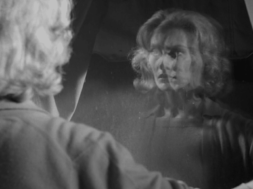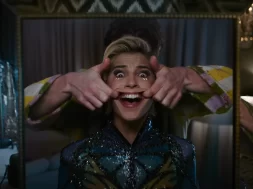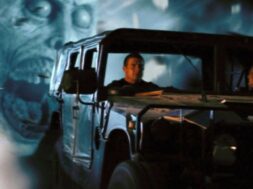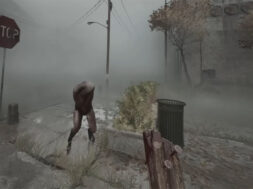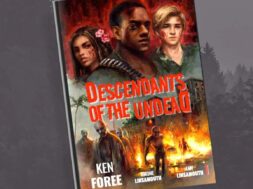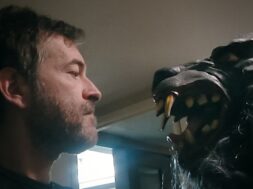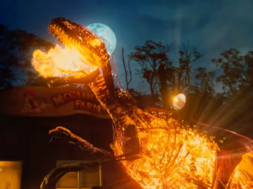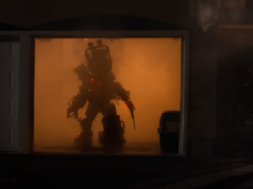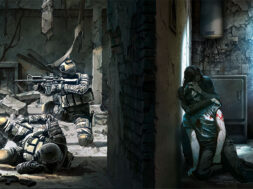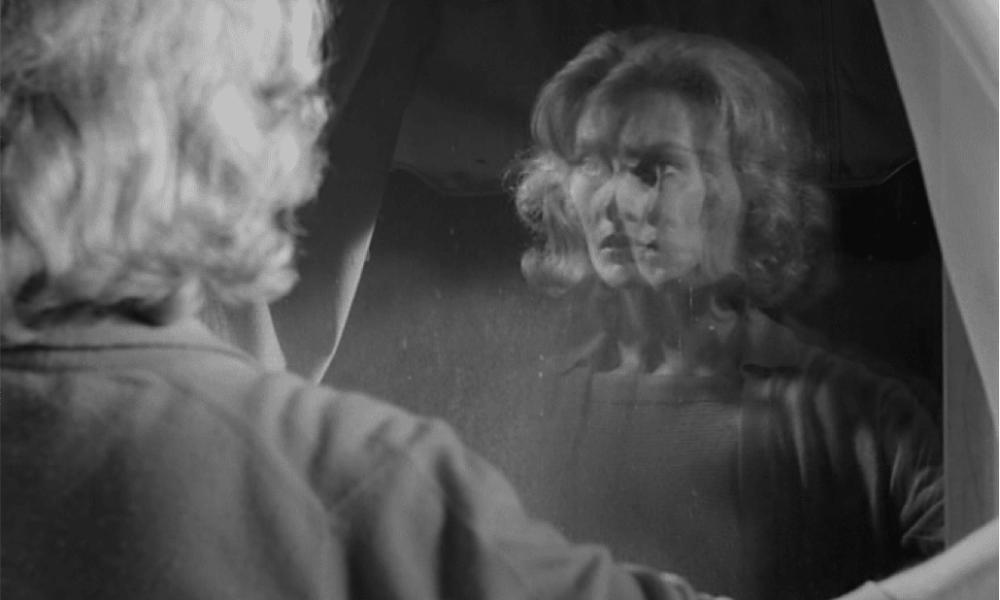
As human beings, we can’t accept death. Most of us have trouble reconciling the end of one’s existence and the afterlife. It’s a hard pill to swallow — but it’s an inevitable conclusion that comes sooner or later. In life, we love and are loved, hoping that we make some small dent in the world. In death, we hold fast to the people we once were, desperately straining to stave off such a brutal coda. With both Herk Harvey’s wonderfully-peculiar Carnival of Souls and Alejandro Amenábar’s dream-like The Others, the characters learn what it means to live and die and how dangerous holding on can be.
Mary Henry (Candace Hilligoss) works as a church organist but shows no interest in religion itself. She simply perceives it as just another job. “I’m not taking the vows; I’m only gonna play the organ,” she tells her new boss, a pastor (Art Ellison) in a little church in Utah. After a drag racing incident killed her friends, leaving her relatively unscathed, she decides it’s time to move on and accepts a new gig some distance away.
When she makes it clear she’s disinterested in faith, the pastor asks her a profound question: “You can not live in isolation from the human race, you know?” Mary, a bit of a weird one, dodges the question and sits down to play the organ. Later, when the minister heads out on an in-home call, Mary rides along, as she wants to make a stop at an abandoned carnival on the way. The circus tent is derelict and haunting, with scraps of debris scattered around. It’s a ghost town, and Mary’s attraction to it has everything to do with her own lonesome, secluded place in the world. She doesn’t seem able to connect with other human beings in the same way as before, so she roams listlessly through her “life.”
She rents a room in a nearby boarding house, where she meets John Linden (Sidney Berger), a sleazeball from across the hall. One morning, he brings her a cup of coffee, and Mary speaks on the differences between night and day, alluding to her own tumultuous relationship with life and death. “It’s funny. The world is so different in the daylight,” she muses, “but in the dark, your fantasies get so out of hand. But in the daylight, everything falls back into place again.”

‘Carnival of Souls’
While out shopping that afternoon, Mary experiences a bizarre occurrence. The world ripples around her shoulders and casts her into a veil of silence. No one can hear or see her, and she can’t seem to hear anything either. She meanders back out onto the street, where sounds slowly trickle back into her eardrums. Birds chirp, and the traffic whirls past. In hysterics, she runs into a man named Dr. Samuels (Stan Levitt), who claims to be a psychiatrist, and whisks her away to his office across the street. There, Mary pours out her heart about a mysterious man (played by Harvey) who’s been following and frightening her. A self-described realist, she shares her experience back in the department store, “It was as though for a time I didn’t exist. As though I had no place in the world, no part of the life around me.”
Mary’s denial — if you didn’t realize, she actually died in the fateful crash that killed her friends — embodies our own. She’s a surrogate for the audience; her story is a wholly tragic one that captures what it means to live and die — and fail to accept the truth. Delirious from fear and paranoia, she later seeks out Dr. Samuels again for further guidance. “I don’t belong in the world. Something separates me from other people,” she pleads. But The Man turns around in the chair and reveals himself. Mary flees in her car. Because her transmission is wonky, she first heads to a nearby mechanic.
While there, she has the weirdest dream, in which she imagines seeing her dead self dancing with The Man inside the circus tent. Couples twirl on the floor, and all she can do is look on from the sidelines, totally flabbergasted and terrified. Once she awakens, she darts away from the mechanic shop and heads out to the carnival. It’s time she finally confronts the truth. She has to stop running. After she’s chased to the carnival grounds outskirts, it’s then revealed that she has been dead the entire time. She only accepts death when there are no other options; sometimes the truth is harsh, and you can never escape it. It always catches up with you no matter what you do.
‘The Others’
In The Others, Grace Stewart (Nicole Kidman) undergoes a similar arc. When the film opens, three servants arrive on the doorstep of a sweeping mansion estate. Mrs. Mills (Fionnula Flanagan), Mr. Tuttle (Eric Sykes), and Lydia (Elaine Cassidy) seek work, and as they previously worked on the property, they already know a thing or two about the place. A week ago, the prior servants vanished in the night without word or notice. While her husband has yet to return from war, Grace goes about life as usual and manages her household with a firm grip. She’s a stern protector, making sure her two children Anne (Alakina Mann) and Nicholas (James Bentley) are well taken care of. Despite attempts to live a normal life, there’s something amiss — but it’s difficult to pinpoint what exactly. Perhaps it’s Grace’s slightly aloof nature, or maybe it’s Anne’s claims that she speaks with a little boy only known as Victor (Alexander Vince). What’s even more, the three servants possess an odd air about them. There’s something dark, maybe even malevolent, bubbling below the surface.
During a morning homeschool lesson, the conversation veers into a discussion of the four hells, including one saved for misbehaving children. Grace stares them down, striking fear deep within their beings. Even though Anne is unwilling to believe such tall tales, the story about children beheaded by the Romans still lingers in her mind. This scene, in particular, carries a certain irony. Spoiler alert, they’re all dead and are seemingly trapped in their own hell, unaware of their current spiritual state and unable to travel anywhere outside the fog-laden property. “That day” is brought up frequently in conversation, yet such allusions are made only to tease the audience about what’s really going on. What is made out as a typical haunted house period piece becomes far more universal about our inability to accept death or even have discussions about it.
The Others never fails its audience with its central thesis: “We must all learn to live together — the living and the dead,” as Mrs. Mills puts it. We, mere human beings, are nothing more than creatures creepy-crawling in existence to the grave. The dead, for their part, must forage through the wilderness of the afterlife to uncover peace, redemption, and acceptance.

‘The Others’
A slow burn by nature, the film methodically unwinds as strange incidents escalate. Grace hears a young child crying out, but she believes it to be Nicholas or Anne. Footsteps can be heard from somewhere above on another floor, and the curtains, meant to protect the children from the sun’s rays (they suffer from light sensitivity), vanish one morning. While scouring through one of the rooms, Grace uncovers a photo album containing photos of what appear to be sleeping families. But they’re not sleeping. They’re very much dead. People took these photos “with the hope that their souls would go on living through the portraits,” says Mrs. Mills. “Grief for a loved one can lead people to do the strangest things.”
Grace grieves for her husband, who has yet to return home from the war. Perhaps that’s why she hasn’t moved on or accepted her fate. When she heads into town to get a priest, she is unable to walk past the woods lining the long driveway, as the fog bears down upon her. In the haze, she hears footsteps and witnesses the slowly-emerging form of her husband. He’s dumbstruck and out of sorts. Grace shuffles him off to the house, where he takes to his bed for days at a time. Later revealed, he only returned to say goodbye — by his emotional reaction, you get the sense he already knows he’s dead.
Grace eventually learns she’s dead, as well, in the film’s shocking twist ending. Having gone off the deep end, and discovered the dead photographs of Mrs. Mills, Mr. Tuttle, and Lydia, Grace dashes upstairs to save her children, who’ve now encountered “the intruders” that have been causing general mischief in the home. Grace enters an upstairs bedroom to discover a medium performing a séance with Victor’s parents. Not only does she discover she is dead but that she killed her two children and then shot herself in the head. “We’re not dead!” the children shriek.
We are not dead.
This refrain rings in the audience’s eardrums. The revelation is far more than shocking; it’s an emotional moment for the characters. With this brutal reality before them, Grace, Anne, and Nicholas finally accept they’re no longer alive. Clinging to one another, Grace’s memory of “that day” comes flooding back, tears staining her cheeks. It’s almost too much to bear, yet she resolves that her house will forever be theirs. “This house is ours,” they whisper over and over again. The camera picks up a b-roll of various rooms and locations in the home, hammering the idea that their presence can and will be felt for all of eternity. As the camera pans out from an upstairs room, Grace, Anne, and Nicholas plant their feet before one of the windows. Down below, Victor witnesses their visage fading from view. The end of their lives is only just beginning, and perhaps it’s a fate much worse than death itself — being trapped in hell with no way out.

‘Carnival of Souls’
The Others and Carnival of Souls explore hell in vastly different ways. Where Mary Henry is both a part of the world and removed from it (depending on the moment), Grace and her family are completely cut off from humanity, left floundering in their own purgatory. And both films drag the viewer through a whirling landscape of death and decay and even force a confrontation with one’s own mortality. Aside from taxes, death is the one inevitable thing we have to look forward to in life. And we must accept it whether we want to or not.
Ultimately, Grace and Mary embody our own fears, reservations, and hang-ups about dying. Their avoidance of truth is not unlike our own. What we fear most in life is the unknown, in whatever form that may come in — whether that’s having empathy for others who are different from us or the terrible uncertainty of the future. We fear because we don’t understand. The two characters here pour such fear into their unwavering commitment to living, going about their lives as though nothing has happened. We do this, too. We hide behind the mundane (or the exciting, depending on how you look at it) as a way to avoid the inevitable, for better or worse.
But death can not be stopped. Eventually, it all comes for us just like The Man stalking Mery Henry in The Others and the servant trio popping up in Carnival of Souls. It’s our fate.
Double Trouble is a recurring column that pairs up two horror films, past or present, based on theme, style, or story.
